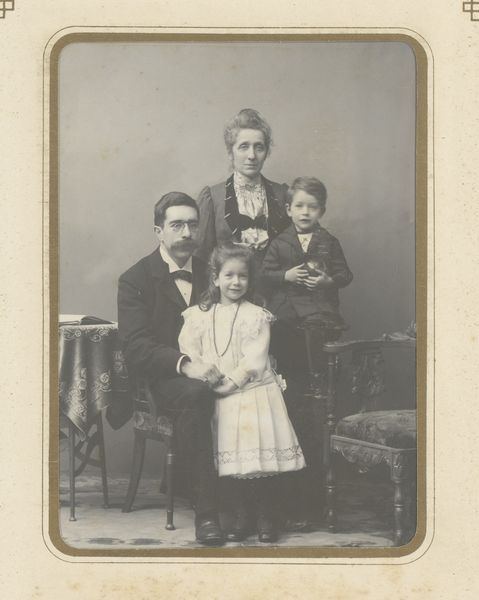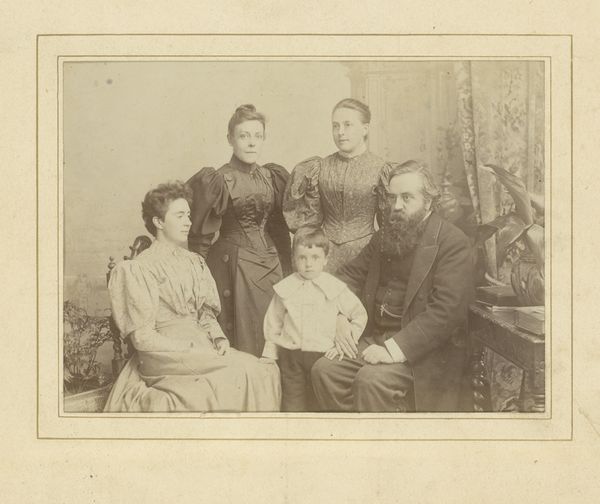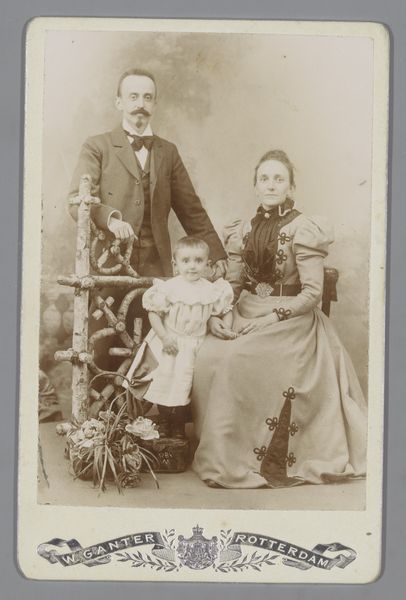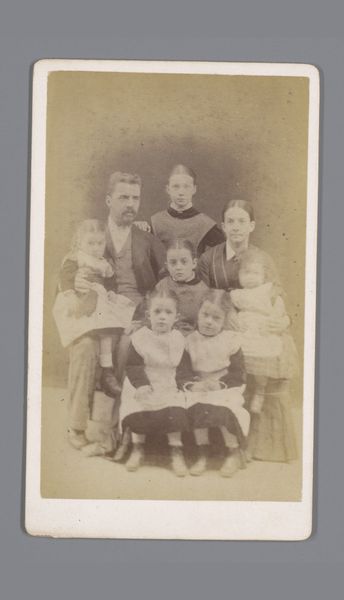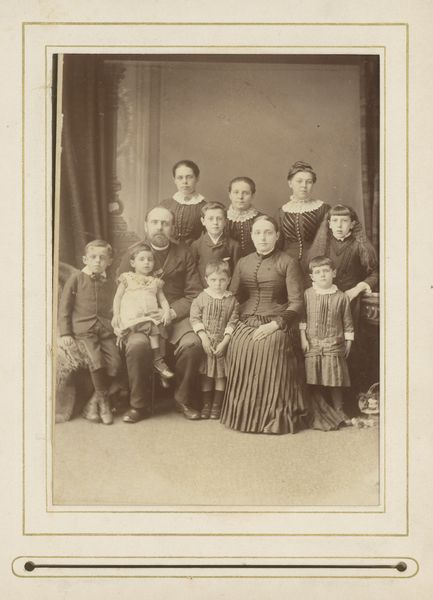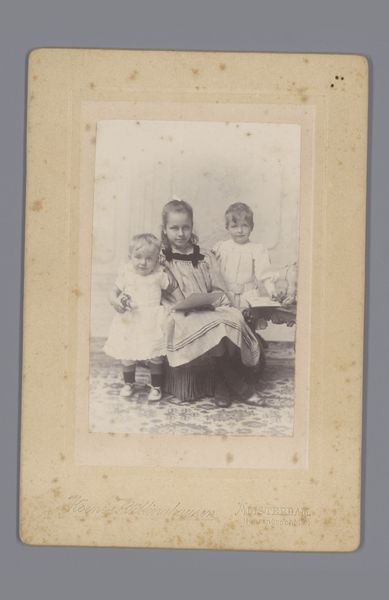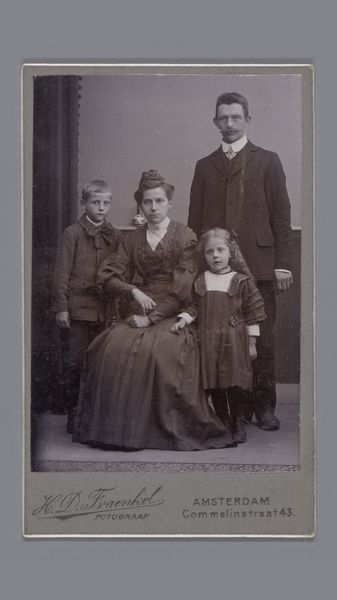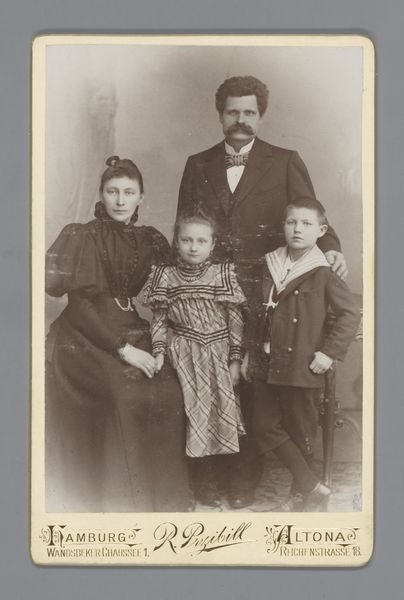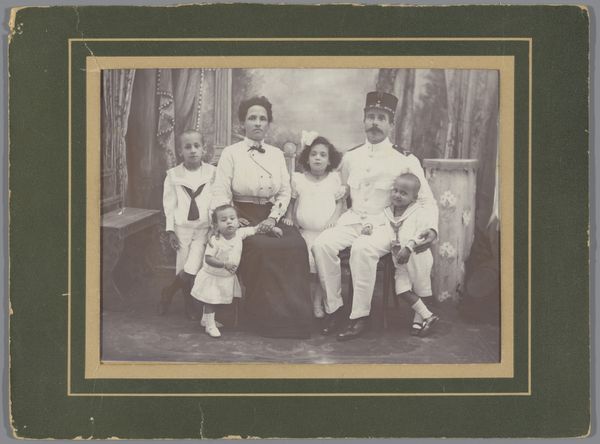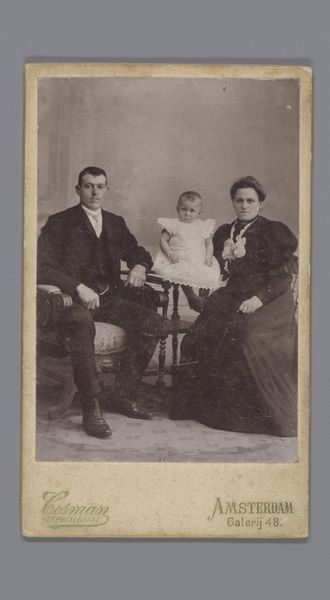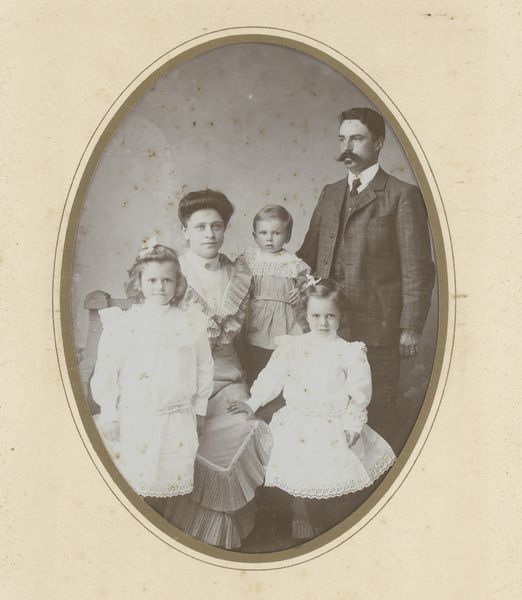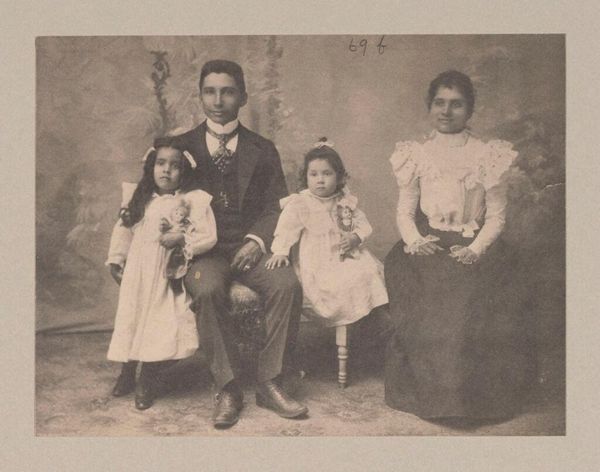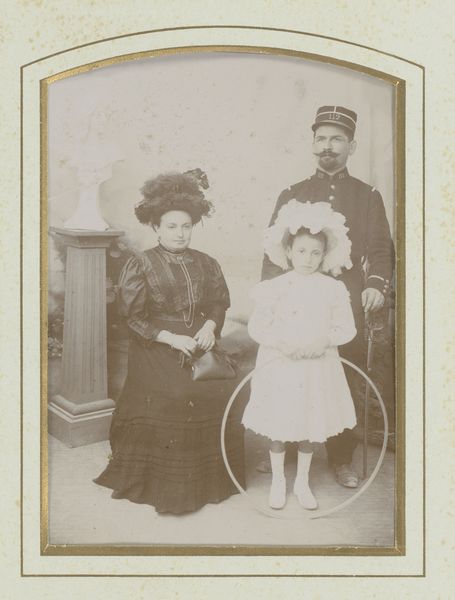
photography
#
portrait
#
pictorialism
#
photography
#
historical photography
#
19th century
Dimensions: height 135 mm, width 98 mm
Copyright: Rijks Museum: Open Domain
Editor: We're looking at "Portrait of a Man, a Woman, and Three Children" by Koene & Büttinghausen, created between 1894 and 1907. It’s a photograph housed in the Rijksmuseum. I’m immediately struck by how formal and almost austere it feels, even for a late 19th-century family portrait. What do you make of it? Curator: This photograph offers a glimpse into the social conventions and representational strategies of the period. Family portraits, particularly those created by studios like Koene & Büttinghausen, played a significant role in shaping middle-class identity. Consider the formality of the attire and posing, which reflect a desire for social respectability. Notice the mother's ornate dress, contrasted against the simplicity of the children's clothes, which speak to social expectations about decorum, especially for women. Editor: So, it's not just a picture but a carefully constructed image designed to convey a certain status? How do museums like the Rijksmuseum contribute to these kinds of constructed notions? Curator: Exactly. Museums don't just passively display objects. Their decisions about which works to collect, how to display them, and the stories they tell about them actively shape our understanding of the past. Showing images like these allows us to deconstruct assumptions we may have, and examine how families wanted to be perceived during the late 19th century. Who had access to such imagery and who did not is vital. This contributes to the politics of imagery. What do you notice about how they're staged in relation to the background? Editor: The stark background emphasizes their placement and almost presents them as if on a stage. I hadn't considered how staged it all might be, it does raise questions about authenticity and the curated image of the family itself. Curator: Indeed. Recognizing that every visual element here signifies choices makes you understand that viewing a historical portrait is more than seeing likeness; it's decoding constructed ideologies. Editor: I never thought about the museum being a curator, in essence, deciding the merit of objects in a grand scheme of culture and history. It has provided an enriching lesson on visual elements as well as what the Rijksmuseum communicates through its exhibits.
Comments
No comments
Be the first to comment and join the conversation on the ultimate creative platform.

